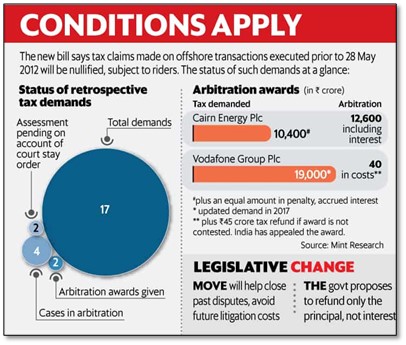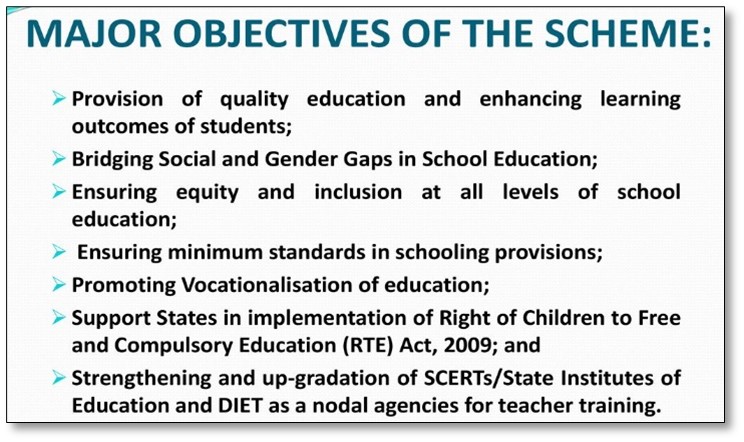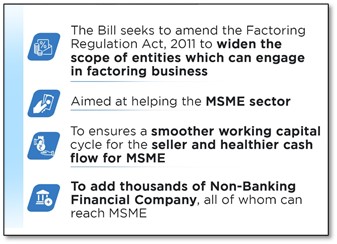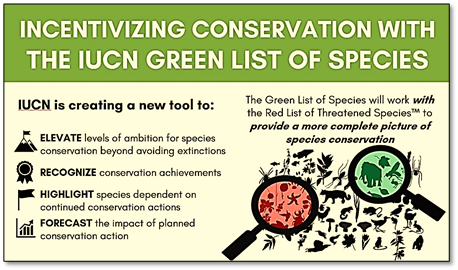Monday, 9th August 2021
Nano Urea
In News
Trials show that nano urea can enhance farmer's crop yields and save nitrogen to the extent of 50 per cent.
About the News
- According to a press release issued by the Ministry of Chemicals and Fertilizers, Indian Farmers Fertilizers Cooperative Limited (IFFCO) has introduced the world's first Nano Urea.
- The Chemicals and Fertilisers Ministry also informed that nano fertiliser holds great promise for application in plant nourishment because of the size-dependent qualities, high surface-volume ratio, and unique properties.
- Experimental trials of Nano Nitrogen through National Agriculture Research System (NARS) on different crops like paddy, wheat, mustard etc. were found agronomically suitable.

What is Nano Urea?
- About Nano Urea: Nano Urea (Liquid) contains nanoscale nitrogen particles which have more surface area (10,000 times over 1 mm Urea prill) and number of particles (55,000 nitrogen particles over 1 mm Urea prill) which makes it more impactful.
- Benefits of Nano Urea:
- Uptake Efficiency: In comparison to Urea the uptake efficiency of Nano Urea is more than 80 %. It is thus, required in lesser measure compared to the conventional urea fertiliser to fulfil plant’s nitrogen requirement.
- Nutrient Efficiency and Yield: Nano-fertilizers release plant nutrients in a controlled manner contributing to higher nutrient use efficiency. Nano Urea (liquid) increases crop productivity and can reduce the requirement of conventional Urea by 50%.
- Eco-friendly: Application of nano urea (liquid) improves yield, biomass, soil health and nutritional quality of the produce.
- Background: Imbalanced application of nitrogenous fertilizers and their low nutrient use efficiency (30-50 per cent) ultimately ends in polluting our soil air and water. NOx gases are an important cause of air pollution while nitrates leaching results in eutrophication and toxicity of our water bodies. Excess nitrate accumulation in leafy vegetables also harms human health.
Note: We will soon have a feature article on nanotechnology and its utility in agriculture sector.
Sources:
Image Source:
Continuation of Centrally Sponsored Scheme for Fast Track Courts
In News: The Union Cabinet has approved the continuation of 1,023 Fast Track Special Court (FTSCs), including 389 exclusive POCSO Courts, as Centrally Sponsored Scheme (CSS) from April 2021 to March 2023.
Scheme for Fast Track Special Courts
- In 2019, the Centre approved a scheme for setting up 1,023 fast-track special courts (FTSCs) across the country for expeditious disposal of pending rape cases under the IPC and crimes under the POCSO Act.
- The same year, the SC also directed setting up of a centrally funded special court in each district where more than 100 FIRs are registered under the POCSO Act.
What are Fast Track Special Courts?
- Fast Track Special Courts are courts dedicated to particular type of cases and administer swift dispensation of justice.
- They have a better clearance rate and hold speedy trials.
- They strengthen the deterrence framework against sexual offenders.
Fast Track Courts- Background
- Fast track courts (FTCs) were first recommended by the Eleventh Finance Commission in 2000 to substantially bring down pendency in the district and subordinate courts over the next five years.
- Fund was granted by the Centre to create 1,734 additional courts in different states for a period of five years.
- In 2011, the central government had stopped funding fast-track courts, which was challenged in the Supreme Court to which the apex court said that it was up to the states to continue or shut down these courts depending on their financial situation.
- Following the december 2012 Nirbhaya case, the Delhi High Court directed the state government to establish five FTCs for expeditious adjudication of sexual-assault cases.
- In 2013, the Centre set up a 'Nirbhaya Fund', amended the Juvenile Justice Act and set up fast-track Mahila Courts.
Source:
Permanent Commission to Women in the Armed forces
In News
The Supreme Court recently refused to entertain requests for clarification on the grant of permanent commission to women short service commission officers (WSSCO).
About the News
- The Central government and women officers were seeking clarifications on the implementation of the Supreme Court’s March 25, 2020 verdict, which has directed the Indian Army to positively grant permanent commission to all WSSCOs who obtained 60% marks in their assessment,.
- The Centre asked whether permanent commission should be granted to WSSCOs who obtained the benchmark 60% marks as laid down by the court but were found “unfit” on discipline or vigilance grounds by a selection board that considered their case in September 2020.
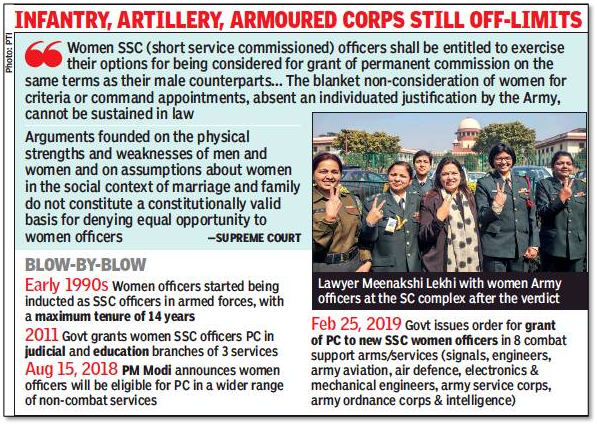
What is the Supreme Court Verdict on Permanent Commissioning of Women?
- The Supreme Court delivered a verdict in favour of 86 female officers of the Indian Army in the Col. Nitisha v. Union of India, in March 2020. The petitioners were challenging the way the Court’s directions in Ministry of Defence v. Babita Puniya (2020) have been implemented.
- In Babita Puniya case, the Court had directed the Army to consider all serving female officers for the grant of permanent commissions, irrespective of them having crossed 14 years or, as the case may be, 20 years of service.
- The Supreme Court, thus, struck down the Army’s discriminatory selection criteria for grant of permanent commission to WSSCO, with respect to selective evaluation of annual confidential reports (ACR) and application of present medical standards retrospectively to selection, which is normally done at five or 10 years of service.
- Noting that the ‘required fitness standards were applicable to male officers when they were granted PC in the early years of service, applying the same exacting fitness standards to the aggrieved SSC women officers, who were granted PC in February 2020 pursuant to the Supreme Court judgment in Babita Puniya case and were therefore senior in age, would be arbitrary.
Need for permanent commissioning of Women in the armed forces
- Skewed Sex Ratio: Increased job security and extended tenure will likely improve the currently skewed ratio of male to female officers. Data reveals that there is only one female officer in the forces for every 16 male officers, with the ratio in the army being 1 to 26. This ratio worsens if one includes medical and dental personnel, making it one woman in the army to 178 men.
- Differences in Joining: The severe imbalance is a result of the varied routes through which both genders enter the forces. Men predominately join the PC with SSCs as an option; women can only apply through SSC. While 100 per cent of women are enlisted through SSC and then can apply for a PC, which is further up for review by a selection board, only 14.3 per cent of their male counterparts face the same restrictions.
- More Opportunities: A PC’s promise of extended tenure will also come with more job and economic opportunities. Short tenures prevented women from achieving a higher rank and the higher salary that accompanied it. The uncertainty around tenure length, combined with patriarchal attitudes, resulted in women tending to jobs such as routine desk work. Such gendered assignments further isolate the gender from positions of power and decision-making.
- Job Security and Retirement Benefits: A PC stands for the assurance that women won’t be left unemployed without benefits despite serving for many years. Traditionally, women officers received no pension as they were contractually mandated to retire within 14 years of service, while defence personnel are entitled to benefits after 20 years in service. Women who are cleared for PC are now eligible for these.
Hurdles in achieving this endeavour
- Half- hearted commissioning: Half a year into the verdict, the forces proclaimed that 70 per cent of women were eligible for PC. However, a more careful look at the data reveals that of the 70 per cent women deemed fit, only 45 per cent were commissioned. This figure stands in stark contrast to 90 per cent of Short Service Commission (SSC) male officers receiving PC in 2020.
- New Filters: The force erected four additional provisions that women officers must now clear for a PC. All of these arrived as blanket policies introduced post-judgment.
- The new criteria would inevitably keep women from gaining permanent tenures, as a third of women awaiting their PC are over 40 years of age.
- Lack of Gender Specific arrangements: There is little scope for the armed forces to create gender-specific units/organisations. Women will have to cope with service in mixed units. So far, the women served only as officers and dealt with male soldiers from a position of authority. As they are inducted as soldiers, the armed forces will have to codify rules and regulations to deal with attendant problems. It may be pertinent to mention that in the US military, the gender related offences far outnumber other violations of discipline.
Way Forward
- Necessary Amends: The military needs to shed its patriarchal attitude and frame a pragmatic policy for gradual induction of women in all ranks and disciplines. Necessary infrastructure must be created for women soldiers.
- Codified Systems: The terms and conditions of service for women must be codified, keeping in view the organisational interests. Military law, rules and regulations to address gender crimes and related problems must be laid down.
- Opportunity for women officers: The Supreme Court judgments were more driven by Articles 14, 15 and 16 of the Constitution than by merit per se. The onus is now on the women to measure up to the exacting physical, intellectual, psychological and performance standards, and the conditions of service.
Conclusion
Presently, adjustments, both in thought and letter, are necessary to rebuild the structures of an equal society. These adjustments and amendments however, are not concessions being granted to a set of persons, but instead are the wrongs being remedied to obliterate years of suppression of opportunities which should have been granted to women.
Question: Discuss the need for the permanent commissioning of women in the armed forces. What are the hurdles in achieving this goal?
Sources:
- Permanent commission to women: Implement order instead of seeking clarifications, says SC to govt
- Permanent Commission for women Army officers: Supreme Court pulls up government for flawed process, says “superficial” equality against Constitution
- Women officers: The long road to permanent commission
- SC cleared way for permanent commission but women must measure up for their armed forces role
- Permanent commission of women in the forces
Image Source:
This Day in History - International Day of the World’s Indigenous People
On August 9, 1982, the first meeting of the UN Working Group on indigenous populations took place. August 9 is commemorated as International Day of the World’s Indigenous Peoples to protect the rights of the indigenous population. There are over 476 million indigenous peoples living in 90 countries across the world, accounting for 6.2 per cent of the global population. The 2021 commemoration will aim on the theme “Leaving no one behind: Indigenous peoples and the call for a new social contract.”
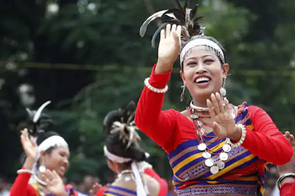
Sources:
E-Prison Project
- Context: The Ministry of Home Affairs (MHA) has provided financial assistance to the States and Union Territories (UTs) for the E-Prisons Project.
- The project aims at computerization of the functioning of prisons in the country and has been operationalised in all States and Union Territories.
- E-Prisons data has been integrated with Police and Court system under the Inter-operable Criminal Justice System.
- E-Prisons application suite has been developed by National Informatics Centre (NIC), Ministry of Electronics & IT (MeitY).
- It has 3 components:
- e-Prison Management Information System (MIS):It is used at the prisons for their day-to-day regular activities.
- National Prisons Information Portal:It is a citizen centric portal showing statistical data of various prisons in the country.
- Kara Bazaar:Portal for showcasing and selling the products manufactured in various prisons of the country by inmates.
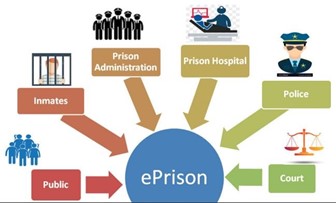
Source:
Image Source:
Plastic-mixed Handmade Paper
- Context: Khadi and Village Industries Commission (KVIC) has secured patent registration for its innovative Plastic-mixed Handmade Paper.
- The plastic-mixed handmade paper was developed under Project REPLAN (REducing PLAstic from Nature).
- This is the first of its kind project in India, where plastic waste is de-structured, degraded, diluted, and used with paper pulp while making handmade paper and thus reduces plastic waste from nature.
- The production of waste-plastic mixed handmade paper is likely to serve the twin objectives- protection of environment and creation of sustainable employment.
- The technology developed by KVIC uses both high & low density waste polythene that not only adds extra strength to the paper but also reduces the cost by up to 34%.
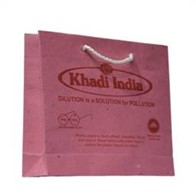
Source:
Image Source:
Constitution (Scheduled Tribes) Order (Amendment) Bill, 2021
- Context: Rajya Sabha has passed The Constitution (Scheduled Tribes) Order (Amendment) Bill, 2021 recently.
- The new bill provides for modifying Part-XVIII of the Schedule to the Constitution (Scheduled Tribes) Order, 1950, relating to state of Arunachal Pradesh.
- It seeks to amend the constitutional list of Scheduled Tribes as recommended by Arunachal Pradesh.
- This amendment in the list of Scheduled Tribes will entail no additional recurring expenditure from the Consolidated Fund of India, on account of benefits likely to be provided to persons belonging to the communities proposed in the Bill.

Source:
Image of the Day - Sponge Farming
This is the image of Sponge farming in Zanzibar, Tanzania. Sponges resemble a white, textured rock but are simple, multicellular animals. Farmers in Zanzibar cultivated seaweed, until increasing ocean temperatures fuelled by global warming made it difficult to grow cash crop. The sponges are more resilient to shifting climate than seaweed, need less maintenance and sell at higher prices to hotels and tourists, offering an eco-friendly alternative to synthetic sponges. The sponges also filter and feed on particles in the water and provide an alternative to overfishing, easing strain on the coastal ecosystem.

Source:
Abanindranath Tagore
- Context: 150th birth anniversary of Abanindranath Tagore.
- Abanindranath Tagore (1871-1951) was born in the creatively distinguished family of Tagores of Jorasanko in Kolkata.
- Abanindranath, a nephew of Rabindranath Tagore, helped shape modern Indian art and was the creator of the iconic ‘Bharat Mata’ painting (Bharat Mata was depicted as a four-armed Hindu goddess wearing saffron-colored robes, holding a book, sheaves of rice, a mala, and a white cloth).
- He was the first major exponent who sought to modernise the Mughal and the Rajput styles in order to counter the influence of Western models of art under the colonial regime.
- His unique interpretation of swadeshi themes created a new awakening and heralded a revival of Indian art.
- Literature and drama held great respect for him and he was an accomplished writer.

Source:
At UNSC, India’s values and interests converge
Essence: The article makes arguments for India’s position as a permanent member of UNSC and the need for a comprehensive approach to maritime security. Given the importance of UNSC, mandate to maintain peace, role in electing judges to the International Court of Justice and power to pass binding resolutions, the present UNSC governance structure does not reflect contemporary realities as it was designed at the end of World War II. As an 8th time member and the current president of UNSC, India must focus on effectively enforcing its mandate and make a case for reforms at UNSC more strongly. There is a need to develop an universally acceptable definition and agree on rules to fight maritime crimes. The leadership as president of UNSC again in December 2022, chair of G-20 in 2023 and personal involvement of the Prime Minister will act as a catalyst to push multilateralism and for a permanent seat at UNSC.
Why you should read this article?
- To understand the mandate, governance structure, need for reforms and India's case for a permanent seat at the UNSC.
- To understand the importance of maritime security, types of maritime crimes and what needs to be done to fight them.
Source:
Revisit the idea of ‘aging out’ India’s coal plants
Essence: This article discusses economic and the environmental benefits of shutting down older inefficient coal plants in India. This would lead to improved efficiencies, reduced coal usage, and hence, cost savings. As it would be uneconomical for old plants to install pollution control equipment to meet the emission standards. We need to consider technical, economic, and operating characteristics of plants apart from growing demand, intermittency of renewables and need to meet emission norms to make retirement-related decisions.
Why should you read this article?
- To get an overview of India’s coal plants and what are the benefits of shutting down old coal plants.
- To understand the risks associated with retirement of old coal plants and what steps should be taken to avoid the same.
Sources:
Man of success or man of values?
Neeraj Chopra: A person that needs no introduction
- He won the gold medalin the men's javelin throw event at the Tokyo Olympics 2020, becoming India's second individual Olympic gold medallist after Abhinav Bindra. He is the first athlete from Independent India to win a medal in a track and field event.
Values upheld by him
- Empathy: Even after winning gold medal he was feeling bad for (Johannes) Vetter, shows his ability to understand the pain of others.
- Altruism: A lot of people have borrowed money from him and he has never taken a note of it.
- Focus: He would avoid conversation on what to do with all the prize money/employment and would always focus on his improvement.
Where to apply this information
- “Try not to become a man of success, rather try to become a man of ”
- What does this quote means to you in present times?
Source:
Share the article
Get Latest Updates on Offers, Event dates, and free Mentorship sessions.

Get in touch with our Expert Academic Counsellors 👋
FAQs
UPSC Daily Current Affairs focuses on learning current events on a daily basis. An aspirant needs to study regular and updated information about current events, news, and relevant topics that are important for UPSC aspirants. It covers national and international affairs, government policies, socio-economic issues, science and technology advancements, and more.
UPSC Daily Current Affairs provides aspirants with a concise and comprehensive overview of the latest happenings and developments across various fields. It helps aspirants stay updated with current affairs and provides them with valuable insights and analysis, which are essential for answering questions in the UPSC examinations. It enhances their knowledge, analytical skills, and ability to connect current affairs with the UPSC syllabus.
UPSC Daily Current Affairs covers a wide range of topics, including politics, economics, science and technology, environment, social issues, governance, international relations, and more. It offers news summaries, in-depth analyses, editorials, opinion pieces, and relevant study materials. It also provides practice questions and quizzes to help aspirants test their understanding of current affairs.
Edukemy's UPSC Daily Current Affairs can be accessed through:
- UPSC Daily Current Affairs can be accessed through Current Affairs tab at the top of the Main Page of Edukemy.
- Edukemy Mobile app: The Daily Current Affairs can also be access through Edukemy Mobile App.
- Social media: Follow Edukemy’s official social media accounts or pages that provide UPSC Daily Current Affairs updates, including Facebook, Twitter, or Telegram channels.

